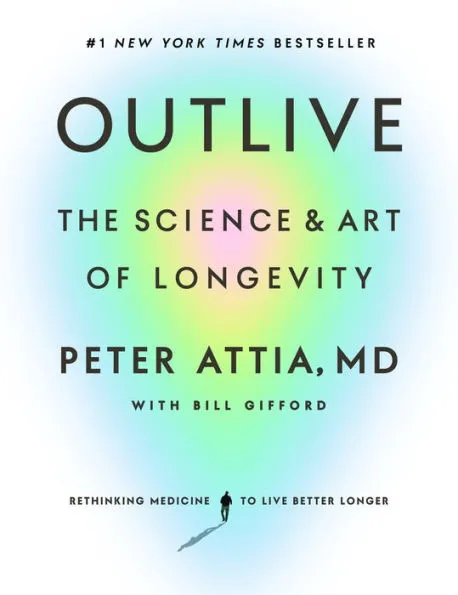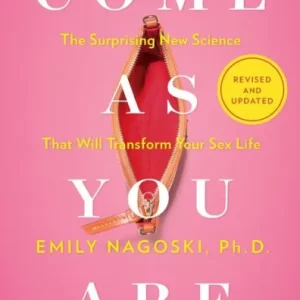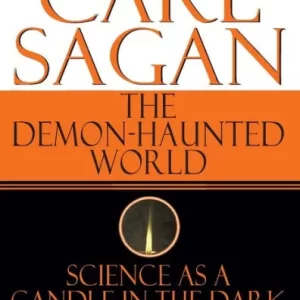I. Introduction
In “Outlive: The Science and Art of Longevity,” Peter Attia delves into the intricate landscape of human longevity, dissecting the underlying science and practical strategies to extend one’s lifespan. Attia, a prominent figure in the realm of longevity research, synthesizes cutting-edge scientific findings with actionable insights, offering readers a comprehensive guide to enhancing longevity and well-being.
Peter Attia is a physician, researcher, and longevity advocate known for his interdisciplinary approach to health and wellness. With a background in mechanical engineering and a medical degree from Stanford University, Attia brings a unique perspective to the exploration of longevity, blending empirical evidence with analytical rigor.
This review aims to analyze the significance of Attia’s work in elucidating the complexities of longevity within the context of modern science. By examining the practical implications of his research and recommendations, we can gain valuable insights into optimizing healthspan and enhancing overall quality of life.
In this review, we will explore the key themes and insights presented in “Outlive,” highlighting its relevance in the pursuit of prolonged vitality and well-being. Through an examination of Attia’s research and principles, readers can glean actionable strategies for fostering longevity in an increasingly complex world.
II. Overview of “Outlive: The Science and Art of Longevity” by Peter Attia
“Outlive: The Science and Art of Longevity” by Peter Attia is a comprehensive exploration into the multifaceted aspects of extending human lifespan and improving healthspan. Attia, a prominent figure in the field of longevity research, combines scientific rigor with practical insights to offer readers a nuanced understanding of the subject.
A. Summary of the main themes and concepts presented in the book:
Attia delves into various themes revolving around longevity, including genetics, nutrition, exercise, sleep, stress management, and emerging technologies. He emphasizes the importance of personalized approaches to health and longevity, acknowledging that what works for one individual may not work for another. The book advocates for a holistic view of health, considering both physical and mental well-being as integral components of longevity.
Attia also explores the role of medical interventions, such as hormone optimization and pharmaceuticals, in prolonging lifespan and enhancing quality of life. He critically examines the existing research while acknowledging the limitations and uncertainties within the field.
B. Highlighting key chapters and sections:
Genetics and Longevity: Attia discusses the influence of genetics on lifespan and the potential for genetic interventions to promote longevity.
Nutritional Strategies: This section explores various dietary approaches, including fasting, ketogenic diets, and plant-based nutrition, and their impact on health and longevity.
Exercise and Physical Activity: Attia emphasizes the importance of regular physical activity and its role in maintaining overall health and longevity.
Mind-Body Connection: The book explores the intricate relationship between mental well-being, stress management, and longevity.
C. Establishing the scope of Attia’s exploration into longevity and its interdisciplinary nature:
Attia’s exploration into longevity extends beyond traditional medical approaches, encompassing insights from diverse disciplines such as biology, physiology, psychology, and sociology. By adopting an interdisciplinary approach, Attia provides readers with a holistic understanding of longevity and underscores the complex interplay of factors that contribute to human lifespan.
Overall, “Outlive: The Science and Art of Longevity” offers readers a thought-provoking journey into the science, strategies, and philosophies surrounding longevity, empowering individuals to make informed choices for a longer, healthier life.
III. Analysis of Key Concepts and Scientific Findings
A. Understanding the biology of aging: Insights into cellular processes and genetic factors.
“Outlive: The Science and Art of Longevity” delves deeply into the biology of aging, unraveling the intricate cellular processes and genetic factors that influence lifespan. Attia elucidates how aging is not merely a result of the passage of time but rather a complex interplay of molecular mechanisms such as telomere shortening, DNA damage, mitochondrial dysfunction, and cellular senescence. By elucidating these processes, Attia underscores the importance of understanding aging at a fundamental level to develop effective interventions for extending lifespan.
Moreover, Attia highlights recent breakthroughs in aging research, such as the identification of longevity-associated genes and pathways, including the role of sirtuins, AMPK, and mTOR. These insights offer promising avenues for the development of targeted therapies aimed at delaying the onset of age-related diseases and promoting healthy aging.
B. Lifestyle interventions for longevity: Diet, exercise, and sleep patterns.
Attia emphasizes the pivotal role of lifestyle interventions in promoting longevity, advocating for a holistic approach encompassing dietary modifications, regular physical activity, and optimized sleep patterns. Drawing on scientific evidence, he elucidates how certain dietary patterns, such as the Mediterranean diet and caloric restriction, can mitigate inflammation, enhance metabolic health, and foster resilience against age-related diseases.
Furthermore, Attia underscores the significance of regular exercise in maintaining cardiovascular health, preserving muscle mass, and bolstering cognitive function. He delineates the importance of incorporating both aerobic and resistance training into one’s regimen to optimize overall healthspan.
Additionally, Attia underscores the critical role of sleep in regulating physiological processes, including immune function, hormone secretion, and neuronal plasticity. By elucidating the detrimental effects of sleep deprivation on health and cognitive function, he underscores the importance of prioritizing adequate and high-quality sleep for longevity.
C. Exploring the role of technology in prolonging lifespan: From medical advancements to data-driven approaches.
Attia explores the transformative potential of technology in prolonging lifespan, from groundbreaking medical advancements to data-driven approaches aimed at personalized health optimization. He elucidates how innovations such as regenerative medicine, gene editing, and precision medicine hold promise for mitigating age-related decline and extending healthy lifespan.
Moreover, Attia discusses the burgeoning field of digital health and wearable technologies, which enable real-time monitoring of physiological parameters and behavior patterns. He underscores how data-driven approaches, powered by artificial intelligence and machine learning algorithms, can provide personalized insights and recommendations for optimizing health and longevity.
D. Addressing misconceptions and myths surrounding longevity.
Attia confronts prevalent misconceptions and myths surrounding longevity, debunking unsubstantiated claims and pseudoscientific notions propagated by popular culture. He underscores the importance of distinguishing between evidence-based interventions and fads that lack scientific rigor or empirical support.
Furthermore, Attia advocates for critical thinking and skepticism when evaluating claims related to longevity, urging readers to scrutinize the validity of purported anti-aging remedies and supplements. By fostering a scientifically informed perspective, he empowers readers to make informed decisions about their health and well-being, grounded in evidence-based principles.
In summary, “Outlive: The Science and Art of Longevity” offers a comprehensive analysis of key concepts and scientific findings pertaining to aging and lifespan extension. Through a synthesis of cutting-edge research and practical insights, Attia provides readers with a roadmap for enhancing healthspan and maximizing longevity in an increasingly aging population.
IV. Evaluation of Attia’s Approach and Writing Style
A. Peter Attia’s clarity and accessibility in explaining complex scientific concepts in “Outlive: The Science and Art of Longevity” are commendable. Attia adeptly breaks down intricate ideas into digestible pieces, making them accessible to readers of varying backgrounds. His use of clear language and relatable examples helps readers grasp the nuances of longevity science without feeling overwhelmed. However, there are instances where Attia’s explanations may still require a basic understanding of scientific principles, which could pose challenges for some readers.
B. Attia’s use of anecdotes and case studies effectively enhances the understanding of key points in longevity science. By weaving real-life stories into his narrative, Attia not only makes the concepts more relatable but also underscores their practical implications. The inclusion of personal experiences and observations adds depth to the book, making it more engaging and memorable for readers. However, some readers may find certain anecdotes more compelling than others, depending on their relevance to their own experiences or interests.
C. Despite his expertise, Attia’s perspective may be subject to limitations and biases inherent in any individual’s viewpoint. As a practitioner in the field of longevity, Attia may prioritize certain approaches or interventions over others based on his personal experiences and professional beliefs. This could potentially result in a skewed presentation of the scientific evidence or an overemphasis on particular strategies for extending lifespan. Additionally, Attia’s affiliation with certain organizations or industries within the healthcare sector may influence his perspective and recommendations, raising questions about objectivity. Readers should approach Attia’s insights with critical thinking and consider alternative viewpoints to gain a comprehensive understanding of longevity science.
V. Practical Applications and Takeaways for Readers
A. “Outlive: The Science and Art of Longevity” by Peter Attia offers readers a wealth of actionable insights to enhance their longevity. Attia delves into various aspects of lifestyle choices, including diet, exercise, sleep, stress management, and social connections. Readers can implement Attia’s recommendations by adopting a balanced diet rich in whole foods, engaging in regular physical activity tailored to individual needs, prioritizing sufficient sleep, practicing stress reduction techniques such as mindfulness and meditation, and nurturing meaningful relationships.
B. While implementing lifestyle changes advocated by Attia may pose initial challenges, their feasibility and sustainability are within reach with commitment and gradual adjustments. Attia emphasizes the importance of personalized approaches, acknowledging that what works for one person may not work for another. By fostering awareness of individual needs and preferences, readers can tailor their lifestyle modifications to suit their circumstances and goals. Additionally, Attia advocates for a mindset shift towards viewing longevity as a dynamic journey rather than a static destination, encouraging readers to embrace lifelong learning and adaptation.
C. Attia’s recommendations hold significant implications for healthcare and public policy, underscoring the importance of proactive strategies to promote longevity and prevent chronic diseases. By prioritizing preventive measures and empowering individuals to take charge of their health, society can mitigate the burden of healthcare costs associated with age-related ailments. Moreover, Attia’s emphasis on the role of public health initiatives in creating environments conducive to healthy living underscores the need for collaborative efforts among policymakers, healthcare professionals, and community stakeholders.
In conclusion, “Outlive: The Science and Art of Longevity” equips readers with practical tools to enhance their longevity while navigating the complexities of modern life. By fostering a holistic approach to well-being that encompasses physical, mental, and social dimensions, Attia empowers individuals to embark on a transformative journey towards optimal health and vitality. As readers embrace Attia’s insights and apply them in their lives, they contribute not only to their personal well-being but also to the broader societal goal of fostering a culture of longevity and resilience.
VI. Comparisons with Other Works on Longevity
A. Contrasting Attia’s approach with other popular books on longevity and aging.
Peter Attia’s “Outlive: The Science and Art of Longevity” distinguishes itself from other popular works on longevity by its comprehensive integration of scientific research, personal anecdotes, and practical strategies. Unlike many books that offer oversimplified solutions or tout singular lifestyle changes, Attia delves deeply into the complexities of aging, exploring the intersection of genetics, lifestyle choices, and environmental factors. While some authors emphasize a particular dietary regimen or exercise routine, Attia adopts a more nuanced approach, acknowledging the variability in individual responses to interventions and advocating for personalized strategies tailored to each person’s unique biology and circumstances.
B. Highlighting unique contributions and perspectives offered by “Outlive.”
“Outlive” offers a unique blend of scientific rigor and compassionate storytelling, making complex topics accessible to a broad audience. Attia’s firsthand experiences as a physician and longevity enthusiast infuse the book with authenticity and empathy, as he shares his own struggles and triumphs in the pursuit of longevity. Additionally, Attia’s emphasis on resilience, purpose, and social connections as crucial components of a fulfilling life sets “Outlive” apart from more narrowly focused works on aging. By encouraging readers to cultivate holistic well-being and prioritize meaningful relationships, Attia inspires a paradigm shift in how we approach aging and longevity.
VII. Conclusion
A. “Outlive: The Science and Art of Longevity” by Peter Attia embarks on a comprehensive journey through the multifaceted landscape of longevity. Attia meticulously examines the interplay between genetics, lifestyle choices, and environmental factors, providing readers with a nuanced understanding of what it takes to extend human lifespan.
B. Attia’s work stands as a pivotal contribution to the field of longevity research, bridging the gap between scientific rigor and practical application. By synthesizing cutting-edge research with real-world anecdotes and actionable advice, Attia empowers readers to take proactive steps towards optimizing their health and lifespan.
C. As readers navigate through the pages of “Outlive,” they are not only equipped with valuable insights but also inspired to embark on their own journey towards longevity. Attia’s holistic approach encourages individuals to adopt personalized strategies tailored to their unique genetic makeup and lifestyle preferences. Moreover, his emphasis on the intersection of science and art underscores the profound impact of mindset and purpose on the quest for longevity.
In conclusion, “Outlive” transcends the confines of a mere scientific treatise, emerging as a beacon of hope and knowledge in the realm of longevity. Its potential to catalyze paradigm shifts in both individual behaviors and collective research initiatives positions it as an indispensable resource for anyone intrigued by the pursuit of a longer, healthier life.



